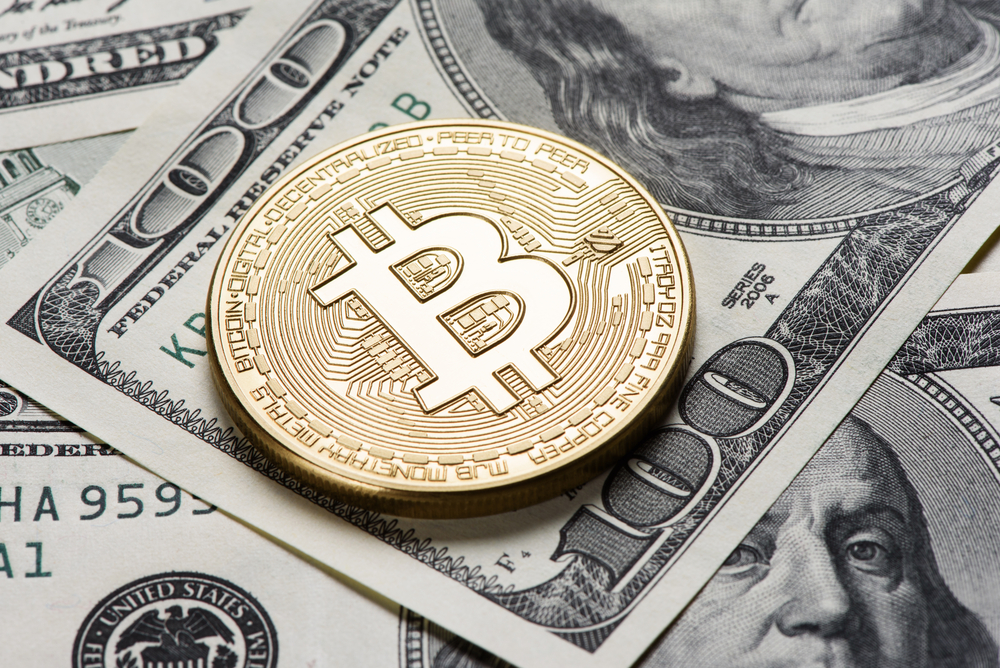Bitcoin’s Potential Rise Tied to Weakening U.S. Dollar, Analysts Say
20.08.2024 12:00 1 min. read Alexander Stefanov
Analysts suggest Bitcoin could solidify its role as digital gold, but this shift may impact the U.S. economy.
Zach Pandl from Grayscale Investments believes a weakening U.S. dollar might drive Bitcoin to unprecedented highs. He anticipates that the dollar could significantly depreciate over the next decade or sooner, depending on upcoming election outcomes and economic policies.
Pandl, formerly a macroeconomic strategist at Goldman Sachs, warns that as U.S. debt rises—currently around $33.2 trillion, far exceeding GDP—the government might struggle with either defaulting or inflating the currency to manage debt.
This situation could enhance Bitcoin’s appeal as it remains immune to inflation due to its fixed supply of 21 million coins.
While the prospect of Bitcoin benefitting from a weaker dollar is intriguing, it’s important to note that the cryptocurrency market remains highly speculative. Investors should consider that Bitcoin’s volatility and its status as a relatively new asset class could introduce significant risks.
As such, despite its potential for growth, Bitcoin’s long-term stability as a store of value compared to more established assets like gold is still under debate.
-
1
Bitcoin Nears Key Support Levels Amid Growing Market Uncertainty
10.06.2025 18:00 1 min. read -
2
Bitcoin Price Prediction: Can the Genius Act Push Bitcoin to $200K?
20.06.2025 22:52 3 min. read -
3
Strategy’s Michael Saylor Says Bitcoin’s Volatility Era Is Over
13.06.2025 8:00 1 min. read -
4
Quantum Computing Won’t Kill Bitcoin, Says Michael Saylor
10.06.2025 12:00 1 min. read -
5
Bitcoin on the Edge: Why One Veteran Trader Sees a 75% Plunge
11.06.2025 13:00 1 min. read
Strategy Boosts Bitcoin Holdings to 597,325 BTC with Latest Purchase
Bitcoin giant Strategy has added another 4,980 BTC to its reserves in a purchase worth approximately $531.9 million, according to Executive Chairman Michael Saylor.
Veteran Trader Peter Brandt Shares Simple Wealth Strategy with Bitcoin at Its Core
According to renowned market veteran Peter Brandt, trading isn’t the path to prosperity for the vast majority of people.
Why Bitcoin Is Stuck Despite Wall Street Demand
Charles Edwards, founder and CEO of Capriole Investments, has offered a fresh perspective on Bitcoin’s stalled price movement near the $100,000 mark, despite growing institutional enthusiasm.
Metaplanet Now Holds 13,350 BTC Worth $1.4 Billion
Metaplanet has expanded its Bitcoin treasury with a new acquisition of 1,005 BTC valued at approximately $108.1 million, further cementing its status as one of the largest corporate holders of the digital asset.
-
1
Bitcoin Nears Key Support Levels Amid Growing Market Uncertainty
10.06.2025 18:00 1 min. read -
2
Bitcoin Price Prediction: Can the Genius Act Push Bitcoin to $200K?
20.06.2025 22:52 3 min. read -
3
Strategy’s Michael Saylor Says Bitcoin’s Volatility Era Is Over
13.06.2025 8:00 1 min. read -
4
Quantum Computing Won’t Kill Bitcoin, Says Michael Saylor
10.06.2025 12:00 1 min. read -
5
Bitcoin on the Edge: Why One Veteran Trader Sees a 75% Plunge
11.06.2025 13:00 1 min. read


